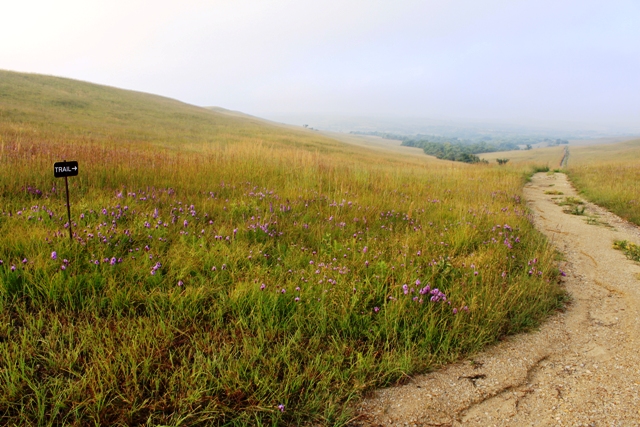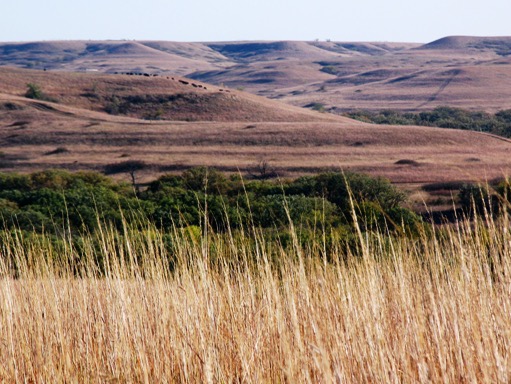An 8 Wonder of Kansas Geography
Konza Prairie, near Manhattan
Address: 100 Konza Prairie Lane, Manhattan, KS 66506
Phone: 785.587.0381
Website: kpbs.konza.ksu.edu/
Konza
Prairie is one of the 8 Wonders of Kansas Geography because...
it is an internationally recognized research site
for tallgrass prairie ecology and because the trails offer the public an
excellent way to experience this spectacular example of the Flint Hills.

|
Photo courtesy flinthillstallgrass.org
|
WHAT IS THE KONZA PRAIRIE?
Source: kpbs.konza.ksu.edu/ Konza
Prairie Biological Station (KPBS) is an 8,600 acre native
tallgrass prairie preserve jointly owned by The Nature Conservancy and
Kansas State University. The KPBS is located in the Flint Hills of
northeastern Kansas, a grassland region of
steep-slopes overlain by shallow limestone soils unsuitable for
cultivation.
KPBS
is operated as a field research station by the KSU Division of
Biology. The station is dedicated to a three-fold mission of long-term
ecological research, education, and prairie conservation. It is a
unique outdoor laboratory that provides opportunities for the study of
tallgrass prairie ecosystems and for basic biological research.
 |
Photo courtesy flinthillstallgrass.org
|
DESCRIPTION OF THE FLINT HILLS
The Flint Hills
region encompasses about 4 million acres extending throughout much
of eastern Kansas from near the Kansas-Nebraska border south into
northeastern Oklahoma, and contains the largest remaining area of
unplowed tallgrass prairie in North America.
PUBLIC HIKING TRAILS
The public hiking trails at the Konza were selected by
Backpacker Magazine in their list of the top 100 day hikes in the
country. The trails are open 365 days a year from dawn to dusk. There
are three loops of trails, so hikers can select a loop of 2, 4, or 6
miles. A $2 donation is suggested.
Source below: keep.konza.ksu.edu/visit/hike.htm
Konza Prairie's hiking trails wind through lowland gallery forest,
cross Kings Creek, and climb over ancient limestone ledges into the
native tallgrass prairie. At the highest points, enjoy spectacular
views of the Flint Hills and the Kansas River Valley.
Experience
Flint Hills geology throughout the trail system. Enjoy a moderate walk
with occasional steep climbs, uneven footing and narrow pathways. To
protect the trail and hikers, the trail is occasionally closed during
wet conditions or controlled burning.

